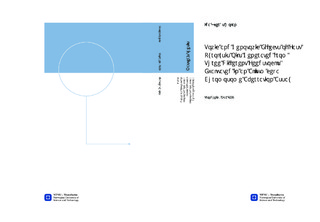| dc.description.abstract | Non-renewable energy sources cover the majority of today s energy demand. However, due to uncertainty of available petroleum reserves and great environmental impacts associated with the use of petroleum, renewable energy sources are of growing importance. Biomass is one of the main energy sources available, and bio-oils derived from biomasses can be converted to fuels, be used in heat and electricity production, or be used as a source of chemicals. Pyrolysis is regarded as the most efficient process for biomass conversion, and the pyrolysis oil yield may be as high as 80% if fast pyrolysis is used. Pyrolysis oils are complex mixtures of compounds, where content and properties depend on the biomass feedstock, process type and conditions. Even though pyrolysis oils are considered environmental friendly compared with petroleum oils, increasing production and application of these oils hasten the importance to assess their hazard in the environment.The aim of this master s project was to determine if the pyrolysis oils generated from fast pyrolysis of three different wood feedstocks, namely poplar, beech and spruce, exerted any toxic and/or genotoxic effects in an Allium cepa chromosomal aberration assay. It was hypothesized that the toxicity and the genotoxicity of the different pyrolysis oils would vary with the feedstock used for making the oils and would increase with increasing concentrations of the oils tested.To achieve the aim, an Allium cepa test was performed on different concentrations of the three pyrolysis oils. Since the oils were diluted with water to gain the different concentrations, only the water-soluble fraction of the oils was tested in this assay. First, a root inhibition test was conducted, where the roots of Allium cepa onions were exposed directly to the different solutions of the oils. The roots were measured after exposure, and dose-response curves were made. Root inhibition can be seen as a measure of general toxicity. Further, roots exposed to three concentrations of the different oils were selected for microscopic examination, consisting of determination of the mitotic index and scoring of chromosomal aberrations. These can be seen as measures of cytotoxicity and genotoxicity, respectively. The toxicity-curves for the three pyrolysis oils were somewhat different; however, all showed a sigmoid shape: decreasing relative root length with higher concentrations. The mitotic index was significantly lower for onion roots exposed to all the oils and concentrations of oils compared with negative control. The frequency of damaged dividing cells, in total and within the phases of division, was, in general, higher in onion roots exposed to all the concentrations of the different oils compared with negative control; however, a concentration-dependency was lacking for the ones exposed to the spruce-oil. The poplar-oil, followed by the beech-oil, seemed to have the highest genotoxic potential. The chromosomal aberrations largely contributing to the high frequency of damage, were those that are usually induced by chemicals exerting effects on the spindle apparatus during cell division. The results indicate that all the three pyrolysis oils exert a toxic, cytotoxic and genotoxic effect. Different fingerprinting techniques have revealed strong similarities between the oils; however, some differences are seen in the abundance of different compounds or groups of compounds. The differences in toxicity and genotoxicity between the oils are probably due to these variations in chemical composition, as a result of the different biomass feedstocks used in the pyrolysis oils. The results from the Allium cepa test are presumed to be a sensitive indicator of toxicity and genotoxicity, and may be seen as an early warning to other biological systems. However in this case, further studies should be carried out to evaluate the effects of the whole complement of the oils, and to identify compounds, or interactions between compounds, responsible for the observed effects. In this way, pyrolysis oils may be manufactured to cause less hazard in the environment. Additionally, the pyrolysis oils tested in the present master s project are considered to be crude bio-oils that need further upgrading prior to application. Thus, the toxicity of refined oils, that may have a different composition of compounds compared with crude oils, should also be tested. Furthermore, other test systems may be used to test differences in toxicity between fossil oils and pyrolysis oils, and thus, get a comparable measure of toxic effects exerted by oils derived from non-renewable energy sources and the alternative, oils derived from renewable energy sources. | nb_NO |

